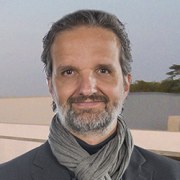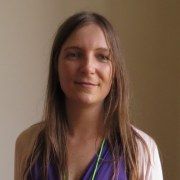Collections are the heart of a museum. As a source of information for science education, as a source of fascination, emotion or inspiration to visitors: collections are the raw material of museum public engagement.
Our increasingly digital and virtual world brings new challenges; museums must reimagine the role of their collections, engaging their public to offer not only knowledge and inspiration, but also a platform for interaction and debate on current social and environmental issues and today's complex world.
In this panel, we present case studies and discuss how contemporary museums can use their collections to play a key role in public discourse across multiple domains including environmental protection, cultural attitudes to nature, harnessing information technology, ongoing scientific discovery, socio-economic change and more.
Head of Communication / Director of the Hall of Biodiversity - Ciência Viva Center
Porto
Portugal
Can historical collection objects have a voice in XXI century museums and science centers? Can they be used to tell stories and address key scientific concepts and phenomena in innovative ways? Do they have the power to spark the visitors’ curiosity and foster their excitement about the natural world as they once did, in a time when expeditions and cabinets of curiosities were “a thing”? An increasing number of examples worldwide shows us that this is indeed possible and, most importantly, desirable! In this session, Ecsite participants will be invited to become acquainted and discuss a strategy for giving new life to historical objects in modern science centers or exhibitions focusing on their re-contextualization through the development of museological metaphors that connect science to literature and the arts. Setting the stage for this fruitful discussion will be the blue whale skeleton that swims inside the Hall of Biodiversity – Ciência Viva Center, the brand new pole of the Natural History and Science Museum of the University of Porto, in Porto, Portugal.
Director
Swiss Alpine Museum
Bern
Switzerland
The Lost and Found for Memories
Since 2012, the Swiss Alpine Museum in Berne has a new concept. The permanent exhibition disappeared and made room for changing exhibitions, events and pop-up productions outside the museum walls. Now there’s a new project in the making: the Lost and Found for Memories. It is an interactive setting that presents selected objects from the museum’s collection and integrates visitors by asking them, what memories and sentiments these objects evoke in them. How do people relate to our collection and how can we as an institution include these collected memories in the collection? How does the Lost and Found need to work to not only mediate “old” knowledge but to also produce “new” knowledge? How can the project help the museum to create a deeper connection to its visitors and communities?
Co-Director
Musée d'ethnographie Neuchâtel
Neuchâtel
Switzerland
The impermanence of things
In his last reference exhibition The impermanence of things, the MEN invit to raise questions about the status of the ethnographic collections in the contemporary world. Can they still help us to understand and interpret the present or do they only give a view on the past and the history? Using different museological techniques – telescoping, aestheticisation, saturation, mise en abyme and critical reflection, the Museum’s team reopened a serie of recent dossiers, reminding that human beings and the material objects they exchange, as well as the images we project onto them, are in a constant state of flux. As such, they are part of process that ultimately boils down to the impermanence of things.
Head Public engagement and Exhibition
Geneva
Switzerland
Beyond digital, revitalize museum collections
The impact of natural history museums relies on their ability to communicate their holdings, through exhibitions, outreach and publications, in order to engage with their audience on contemporary issues. In a society flooded with digital tools and social networks, they need adventurous new ways to interact with the public and to contextualise the knowledge base their collections represent. Discover the original approaches of different European museums: for example a photographic project linked to the dioramas in Geneva, a new visit of the galleries with an ecological point of view or the use of immersive scenography in presenting collections in Venice.





